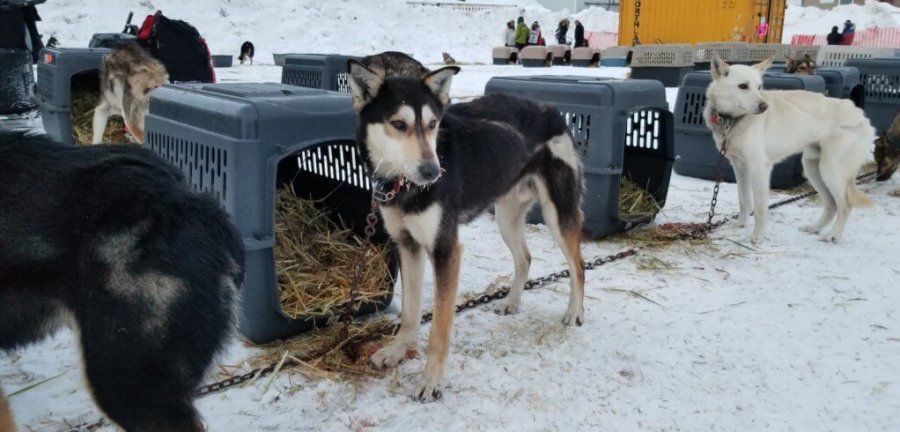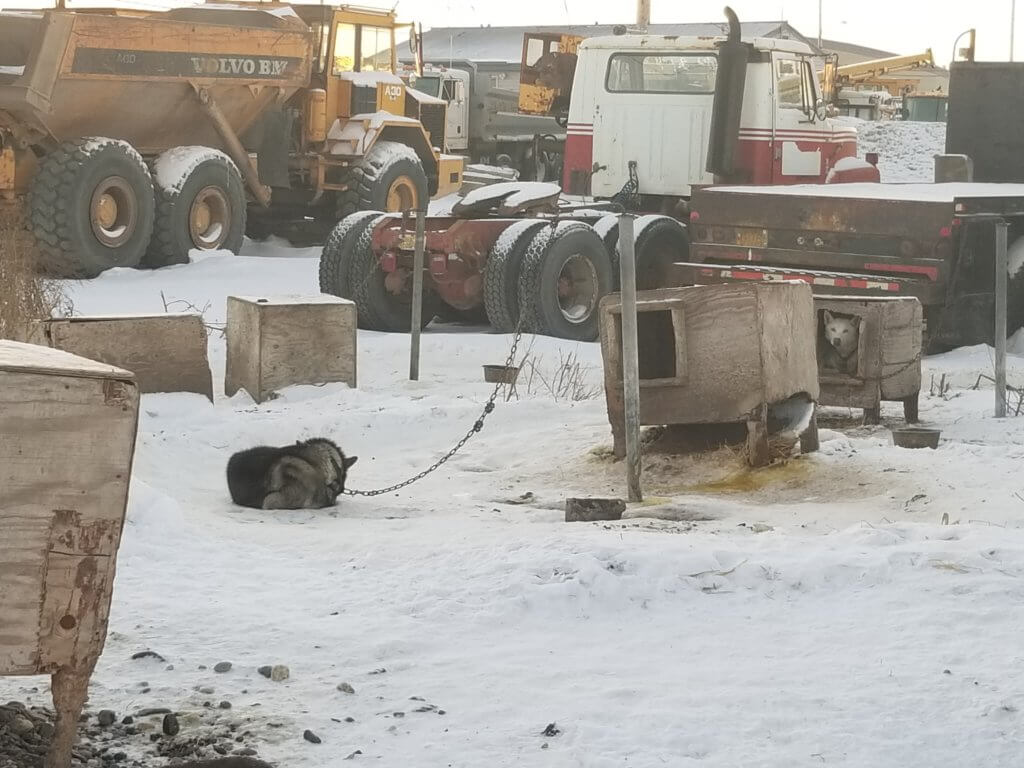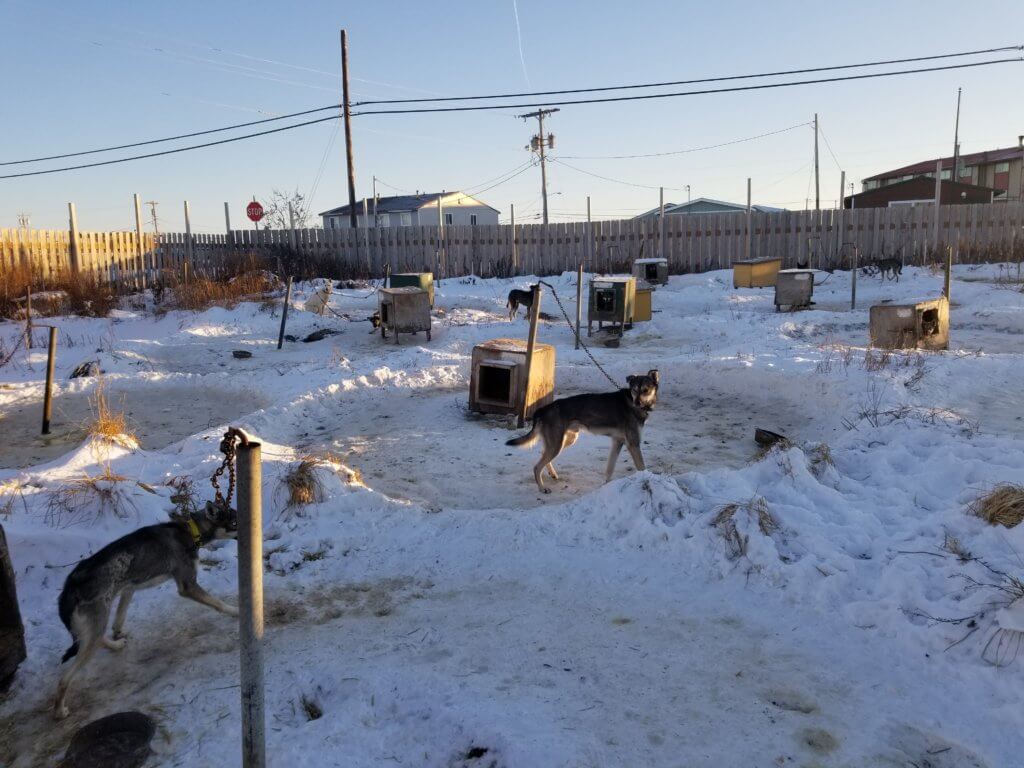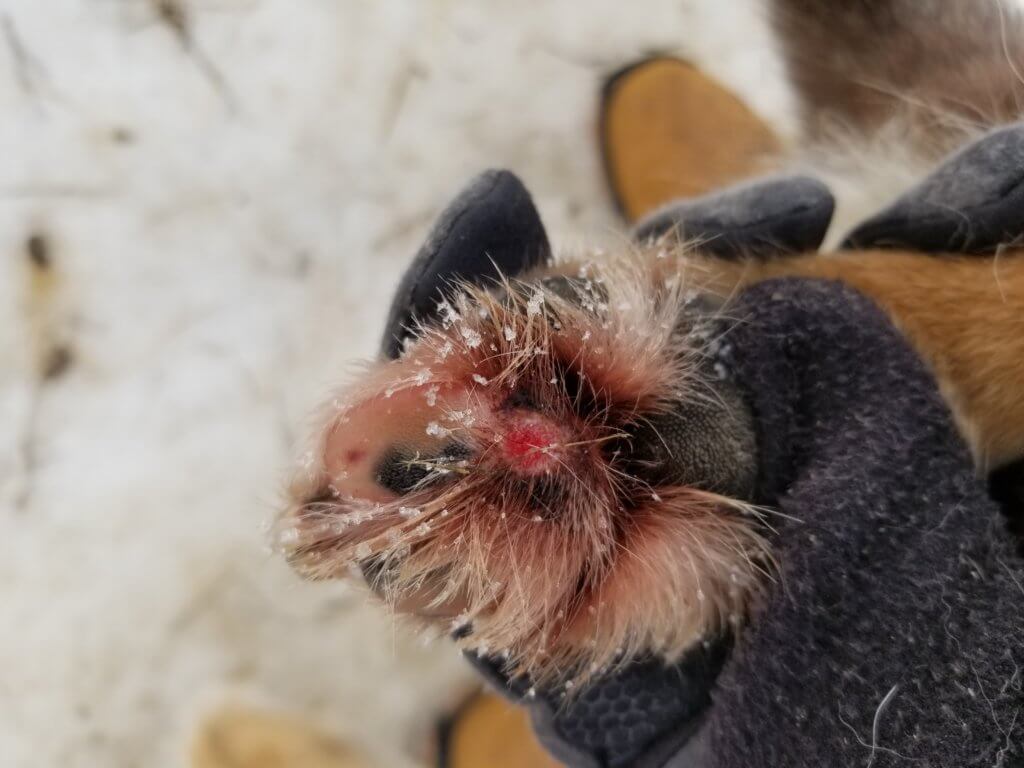By Colin Henstock
More than 150 dogs have perished in the Iditarod Trail Sled Dog Race and countless more have died off the trail. One of the top causes of death? Acute aspiration pneumonia caused by dogs inhaling their own vomit. A PETA exposé now reveals the scope and scale of the toll that the Iditarod takes on dogs.
Have a look at what we found. We think you’ll agree that this abomination must end.
A PETA eyewitness who recently worked in Alaska’s dog sledding industry found dogs denied veterinary care for painful injuries, kept constantly chained in the bitter cold and biting wind and forced to run hundreds of miles even when exhausted and dehydrated.
At a kennel operated by former Iditarod champion John Baker and musher Katherine Keith—who had two of her dogs perish during past Iditarod races—PETA’s eyewitness found dozens of frantic dogs. In wind chills as low as minus 19 degrees Fahrenheit, the dogs were chained near dilapidated, uninsulated boxes—some of which had collapsed—containing little, if any, straw bedding. Dogs were routinely fed a “stew” of rotten or moldy meat that at times was so foul they couldn’t eat it. Many dogs’ ribs and hips protruded. Injured dogs were still forced to run.
Snickers, one of Baker’s lead dogs in 2011, when he won the Iditarod, was limping and suffering from chronic, painful arthritis. Rather than providing the 11-year-old dog with the veterinary care she desperately needed, Baker chained her by the frozen sea, all alone and unable to escape the Arctic cold. She had no shelter until PETA’s eyewitness built one for her. Baker admitted that Snickers had suffered from arthritis even when she ran the Iditarod and that she was “in a lot of pain.”
Baker said he had not put her out of her misery (that is, shot her) because “I just don’t have a good place to bury her.” This is how “valued” dogs are treated in “retirement.”
Birch was just a puppy when she sustained a crippling, extremely painful spinal cord injury, which left her dragging her hind legs. But Baker and Keith simply chained her up outside and left her to suffer.
Once, some of the dogs were tied to a moving Jeep, and one of them became exhausted and got tangled up. Baker refused to untangle her, allowing her to be dragged along the icy road for about 500 feet, which he said would “teach her” to “reconsider slowing” when she was tired. When another dog slowed down to defecate, Baker refused to brake, saying “[it’s] better to have a dead dog” than a “dog [who] slows down the team.”
At three-time Iditarod champion Mitch Seavey’s kennel, PETA’s eyewitness found scores of dogs continuously chained to barrels. Some had run in circles for so long that their paw pads were worn down or raw. Dogs were forced to run day after day, even when their paws or nails were bleeding. Some workers hit them in the face to make them line up in front of the sleds.
One dog, Captain, had open, infected wounds on his neck that smelled like rotting flesh. A worker who wasn’t a veterinarian squeezed pus and tore tissue out of them barehanded then sprayed them with a fungicide.
One worker harnessed dogs next to each other even though she knew they had fought before and said she would “kick them in the balls” if they fought again. After one training run, she boasted, “I just kicked [a dog] in his anus.”
When a team of dogs broke free from a sled, one dog was dragged to death while another was dragged for several miles and left urinating blood.
After the 2019 Iditarod, Seavey told workers that he’d noticed that one dog had labored breathing but had still run him more than 50 additional miles before dropping him. Some of Seavey’s dogs finished the race with split and bleeding paws.
There are thousands of dogs suffering in Alaska—all in the name of mushers’ greedy pursuit of cash and “glory” on the Iditarod Trail. Dogs deserve far better than a lifetime of isolation, cruelty, suffering and death.
Colin Henstock is an investigations specialist with People for the Ethical Treatment of Animals (PETA).








